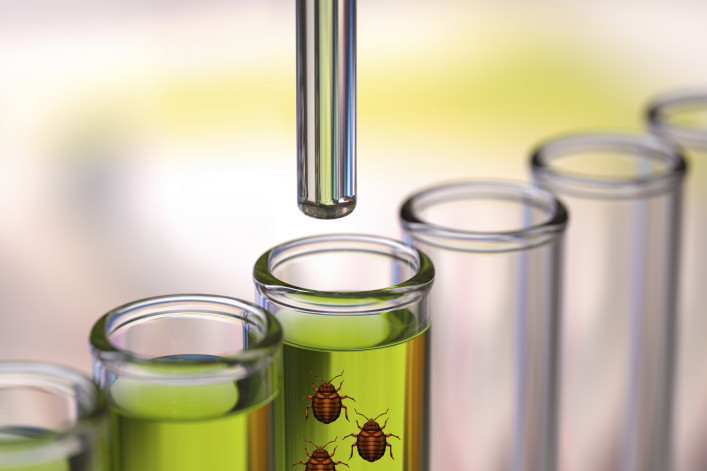Is that a bedbug? A DNA test will tell you in 24 hours

A new weapon in the fight against bedbugs has arrived, and it looks like a giant Q-Tip. Introducing bedbug DNA testing, which promises to bring the same technology used at crime scenes and Maury Povich paternity specials to the detection of these hard-to-identify insects, making it much easier for city dwellers to distinguish one loathsome pest from another.
“Basically we come in and swab the surface, depending on what we’re looking for, and then we would take that sample and overnight it to the laboratory,” explains Martin Hale, chairman of Biopttica, the New York-based company that owns BugLabID, which has been offering the service in New York for about eight to 10 months. (The company also tests for cockroaches, mice, mold, salmonella and several other kinds of bacteria.)
Performing the DNA test takes about 45 minutes at BugLabID's Dallas facilities, and you’ll get results by email within 24 hours of the collection of the sample, Hale says. It costs $150 per test (so if you’re worried about cockroaches as well as bedbugs, that would run $300.)
The service has some advantages over current detection methods like canine inspections, chief among them accuracy, according to Hale. “With DNA, there is no disputing it,” he says. (There's been something of a backlash against bedbug-sniffing dogs for this reason.) Plus, having different companies do the detection and extermination helps protect customers against corrupt pest control firms that find "bedbugs" where there are none. “We are not a remediator. We are only a tester, so there is no conflict of interest,” Hale says. One of the test's main selling points is that it can also help identify the location and, thus, severity of the problem, meaning your landlord could focus fumigation efforts on a single apartment, rather than mount a full-scale chemical attack on the building, Hale says.
If you do follow this route, however, you’ll still have to call an exterminator. And at the moment, BedBugID is marketing its services more toward pest control companies and property managers, rather than average apartment dwellers, though individuals are welcome to contact the company directly, Hale says. (He estimates that about 10 to 15 percent of their business comes from individuals.)
So far, it doesn’t seem as if this technology has caught on in the pest control industry, at least according to Gil Bloom, president of Standard Pest Management, who says that he doesn’t know of any exterminators currently doing DNA tests.
While Bloom acknowledges the science is sound, he’s skeptical that DNA testing offers more than a visual inspection from a professional. “If I’m going to go into all areas [of a bed], swabbing in cracks and crevices where bedbugs could possibly be hiding, I’d see the damn bedbug,” he explains. “I wouldn’t need to send in a swab to tell me I have bedbugs! … It sounds really cool, [but] I don’t really see the reason for it.” It's also worth noting that plenty of pest control companies will evaluate photos of would-be bedbugs for free, as we’ve reported previously.
In response, Hale notes that the tester doesn't have to "come in direct contact with the DNA [but] we must come very, very close to it. This is why we instruct service providers to swab in a zig-zag motion so that the likelihood of the swab being pulled across a trace line of DNA is most likely to be achieved."
For some, it will be worth $150 to verify—with science!—that the splotch on your bed is a splatter of old food and not a bedbug fecal stain (yes, that’s a thing). In other words, the technology could be “great for relieving the anxiety of some of the people who are paranoid and obsessive about bedbugs,” Bloom says.
Related:






















